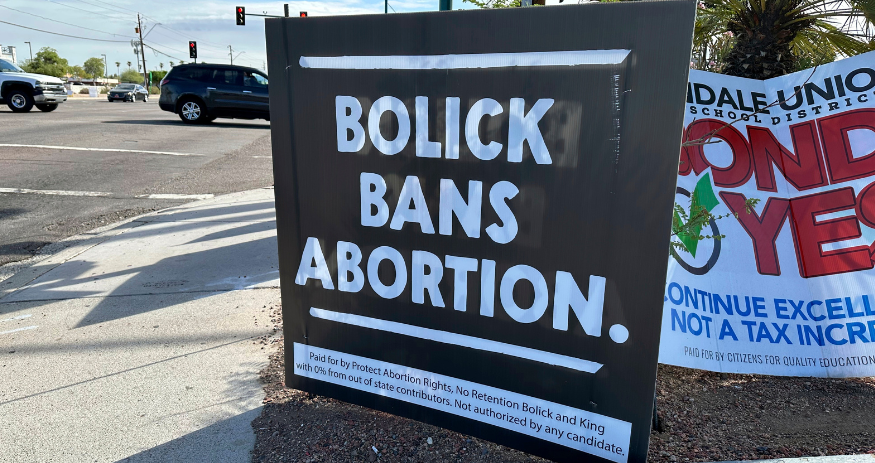Judicial retention becomes political in 2024
Kiera Riley Arizona Capitol Times//December 30, 2024//[read_meter]
Judicial retention becomes political in 2024
Kiera Riley Arizona Capitol Times//December 30, 2024//[read_meter]
Judicial retention elections have by-and-large been invisible to voters beyond the ballot in past cycles, with no signs, no voting guides and no attempt at overhaul.
But in 2024, a ballot measure to limit when judges stand for retention and campaigns organized for and against two state Supreme Court justices created a conspicuous race.
Whether judicial retention elections are wont to see the same level of electoral attention and attempts at reform in coming years remains an open question, but those engaged in retention elections say, despite heightened visibility, this year’s results did not necessarily make for a watershed moment.
Per final election results, voters roundly rejected Proposition 137, a measure tailored to eliminate term limits for judges given “good behavior,” with 77.67% of people voting against its passage, while Justices Clint Bolick and Kathryn King, who saw campaigns both for and against their retention, passed voter muster and were both retained by 58.19% and 59.35%, respectively.
The end result was effectively no change in the status quo.
“It resoundingly seems to me to indicate that voters still want to have a voice, they don’t want to let that go,” said Timothy Berg, an attorney and chair of a PAC to advocate and educate on the current retention system, Arizonans for an Independent Judiciary. “It also seems to me that the voters also weren’t swayed much by all the campaigning that went on.”
In 2022, three Maricopa County Superior Court judges were not retained by voters, giving way to the perception of the increasing “politicization” of retention elections. In 2024, the fear materialized as an attempt at legislative reform, with Republicans forwarding a resolution limiting when judges are made to stand for retention elections.
Under Proposition 137, judges and justices would only be made to go before the voters if they were convicted of a felony offense, or any crime involving fraud or dishonesty, were involved in any personal bankruptcy proceedings, had any foreclosed mortgage or if the Judicial Performance Review Commission deemed the judge did not meet standards.
The measure headed to the ballot as campaigns around the 2024 judicial retention election started to take shape. Though some voting guides advocated against retaining a handful of Superior Court judges, most of the attention, and money, coalesced around Justices Clint Bolick and Kathryn King, given their earlier ruling upholding the 1864 abortion ban.
Protect Abortion Rights, No Retention Bolick and King formed to oust the justices, while Judicial Independence Defense PAC sought to see the two retained. A third PAC, Arizonans for an Independent Judiciary, advocated for the retention of all judges and the system.
As of October, Judicial Independence Defense PAC raised $530,000 and spent $333,007. Protect Abortion Rights, No Retention Bolick and King brought in $17,477 and spent $5,492.
Both campaigns printed signs, though the Judicial Independence Defense PAC commanded more street corners. Berg said this year was “extraordinary” in the sense that signs and spending in judicial retention elections went on at all.
“I spoke at a seminar in October with a bunch of lawyers, and I asked them, ‘How many of you have ever seen a campaign sign before this year for a judicial election?’ And out of 40 people, three people raised their hand,” Berg said. “Then I asked, ‘How many of you haven’t seen one this year?’ And nobody raised their hand.”
Beyond PACs, grassroots group Civic Engagement Beyond Voting put together Gavel Watch, a voting guide on judicial elections. Gavel Watch advocated against the retention of Bolick and King.
“The purpose of our oversight is not to throw lots of judges off the bench, it’s really just to call attention to what the judiciary does,” Cathy Sigmon, co-founder of Civic Engagement Beyond Voting and Gavel Watch, said. “We’re so privileged in Arizona to have that oversight. I’ll continue to call attention when any judge seems to sort of put their own political judgment above what the law states.”
Though abortion served as some conduit for campaigns against judges, given Bolick and King’s vote to keep the 1864 ban in place, the issue did not entirely carry into how voters weighed in on retention.
The Arizona Abortion Access Act passed with 61.61% support, while Bolick and King were retained at a similar margin.
“I think what it showed is that, fortunately, campaigns to get rid of judges are hard to do, and that’s as it should be … you don’t want a system where a judge makes what he or she thinks is the right decision, but it’s unpopular, and you bounce the judge for doing that,” Berg said. “It showed voters made a distinction between what they wanted the policy of the state to be, which is the initiative, and what they thought judges should be doing, which is doing their jobs, and not necessarily punishing them for disagreeing with them.”
As for Prop. 137, efforts to oppose were wrapped into efforts by Gavel Watch and by Protect Abortion Rights No Retention Bolick and King, but there was no organized campaign for or against the measure. The effort failed by nearly 80%.
“Hopefully they realize that that is not a winning issue,” Sigmon said.
Berg agreed the margin to which Prop. 137 failed was particularly illustrative of how voters view the current judicial retention system.
“At the end of the day, the state kept that system, and it was used the way it should have been used.”
















